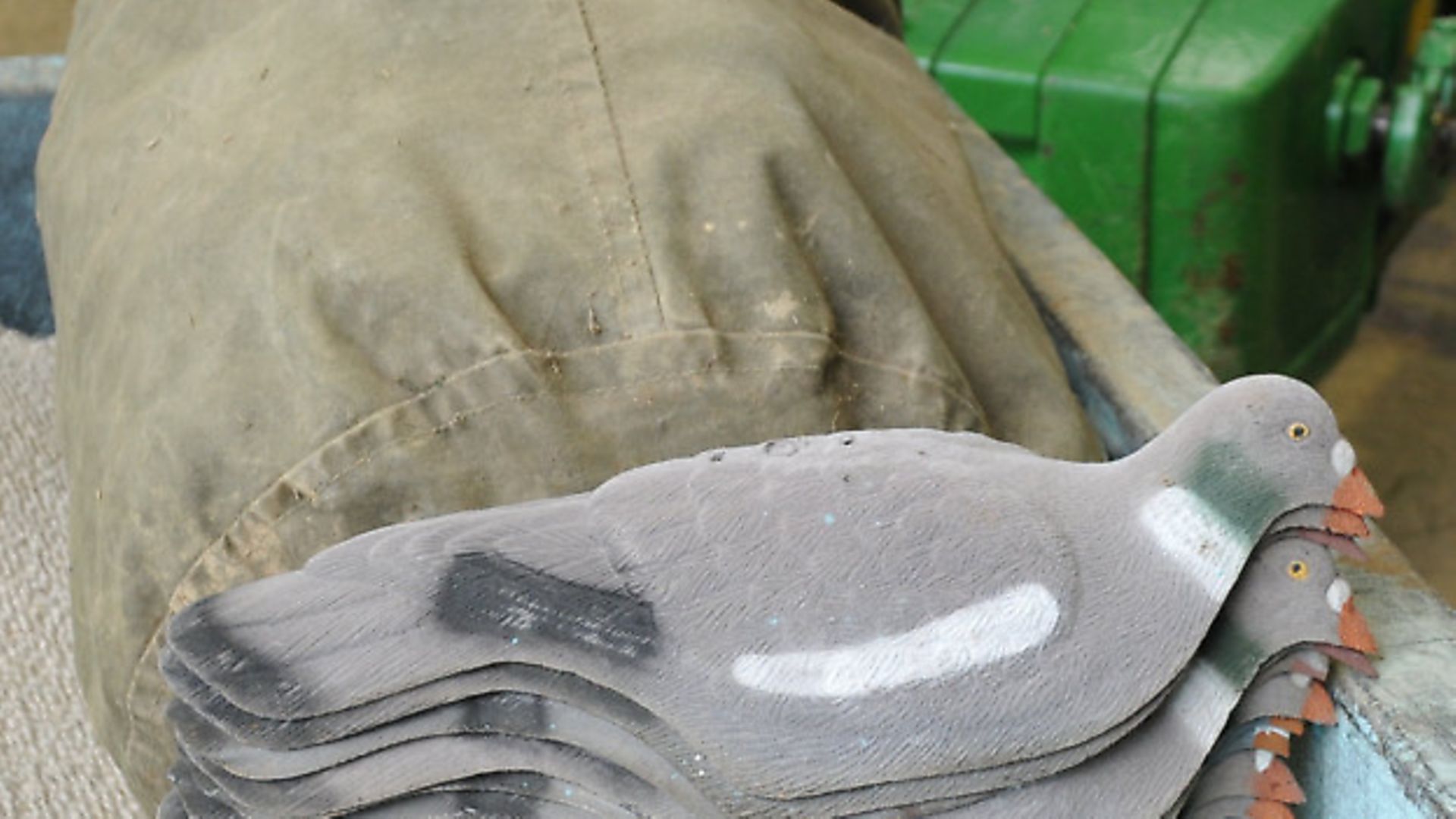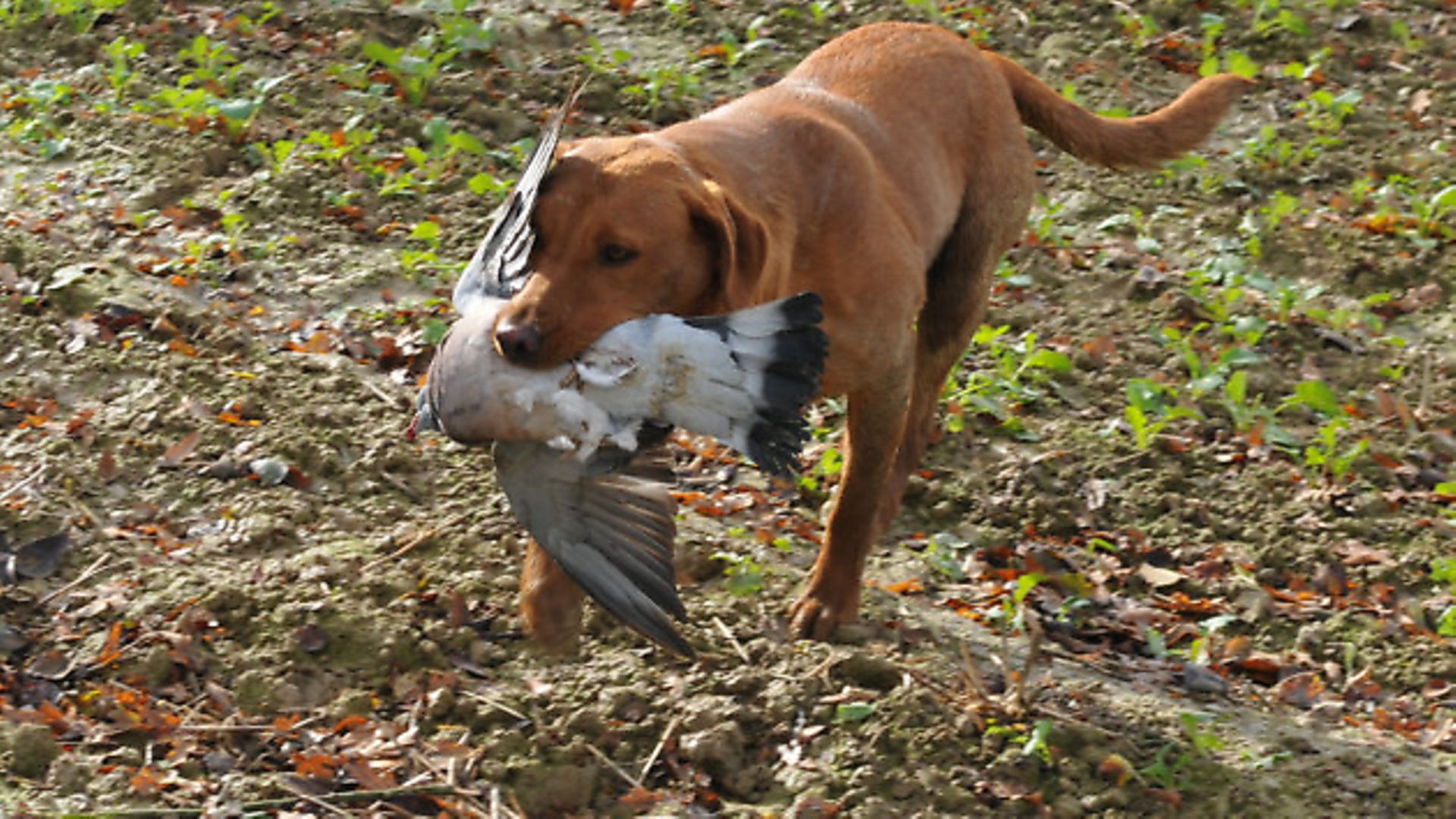The birds are there, conditions look perfect, a big bag is in the offing… but even the Crowman can be caught out sometimes
 credit: Dom Holtam
credit: Dom Holtam
“I’m confident we’ll shoot over 100 today.” 100? Pah! I’ll admit that as a pigeon shooting rookie I ought to defer to Andy Crow’s assessment, but he is way out. The rape field was blue as I drove up to the farm today. There are pigeons everywhere. He’s even told me to bring a gun so he must be expecting a big day; I conservatively predict we will top 250.
 credit: Dom Holtam
credit: Dom Holtam
As Andy told us they would last month, the birds have been targeting the young rape plants hard. For the last few days the pigeons have been an almost constant presence and the only potential fly in the ointment is fog. “When you get thick fog,” Andy says, “it affects the sensors on all the light-activated gas guns so they often don’t work. That means that instead of being moved around, the birds can go and settle wherever they want.”
However, the gas bangers are working this morning on the surrounding farms and Andy sets up flags and his own bangers on the other rape fields on his farm to concentrate them in the area we are planning to shoot.
He has even gone to the trouble of trimming up one of his hedges to ensure that he can cover off two different fields.
“There are two flightlines here – you know I like to double my chances! One cuts across this field and the other one makes for that gap in the hedge behind us. If we put a hide in the hedge here, where I’ve made this gap, and a pattern in front and a pattern behind, we should draw both flightlines.”
Sounds simple. And as we put out the decoys, the amount of birds moving through only serves to enforce my earlier prediction. If they are trying to come into the pattern with us in full view, this is going to be a bumper day.
As soon as we get in the hide, Andy’s Beretta is in action and birds are hitting the deck. I realise that my role will be as much spotter as photographer, letting him know when birds are coming in from behind.
Then it all starts to slow down. The bird traffic disappears. Clouds build in the west and the rain sets in. After being called a fair-weather shooter in last month’s magazine, Andy decides to sit it out. But the rain builds and builds, and in the end we make an executive decision to leg it back to the farm for a coffee and a bowl of porridge.
It’s a chance to reflect, reassess and come up with a plan B. Andy is pretty incredulous that the birds cleared off so quickly. “They must have an easy food source somewhere else. I’ll start having a look in some crops when we head back out. I thought that we would have a decent chance to keep them on the move and coming in to this field today. That is always when you have the big days.
“Mind you, I tell you something else that always helps in this spot: lofted decoys. Normally by this time of year, the leaves would be down. But there are still far too many for lofted decoys to be effective. However, once those silhouettes are visible on these flightlines, they can be a real magnet.”
After an hour staring forlornly towards the prevailing conditions, things begin to brighten and we trudge back to the hide. The early optimism has been replaced by sullen resignation on my part but Andy has a plan to stir things up.
He disguises the batteries for the whirly better, then changes his mind and opts for just floaters. He also explains why traditional plastic decoys can put birds off: “Once you have a shower of rain they really shine in the sunlight. That puts the birds off from a long way away. The modern flocked decoys are definitely better, but they are more expensive and you have to be careful not to get them covered in mud.”
Speaking of which, the floor of the hide is soon a claggy morass that sucks at our boots. Footwork is essential for Andy’s shooting – especially when he has a near 360 degree field of fire. In the past, when the fields have been wet, Andy has used an old bit of MDF board to give sure footing, but today’s deluge has caught us out.
Things threaten to improve around lunchtime, with a few birds making hard for the decoys. It proves to be a false dawn, though, with the sudden rush of action proving to be an exception to the rule. Andy at least ensures that any birds coming within range don’t leave again, and that gives young Ruby enough work to stop her from getting too bored.
The wind has been building steadily as the day progresses and after the rain stops has become quite blustery. The birds that come with the gale behind them are like missiles, while others beating into the wind alter their paths to take advantage of natural cover, distorting the flightlines we had observed earlier.
After having a tidy up on the pattern, Andy examines a couple of full crops and what he finds surprises him: the birds are stuffed full of barley! It takes Andy a bit of head scratching before he remembers a field of barley stubbles about three miles north of our hide. “I can’t believe they are still able to get that much of a feed but clearly there’s plenty there for them. It’s always useful to build a picture of where the birds are feeding. In the summer I’ll often pot a couple from favourite flightlines just to examine what they have been feeding on. It’s as important a part of my reconnaissance as driving the ground and watching with binos at certain times of the year.”
It has been a frustrating day. Andy has put in a lot of effort for a bag of 50 birds and there is no disguising his disappointment. “I was certain we would get three figures today. This is where they have been feeding all week and I thought the wind and the bangers would stop them from settling somewhere else. It just goes to show you can’t be too confident. Conditions can change in an instant. It’s strange though… Apart from a decent berry crop there just isn’t enough natural food. So they’ll be back.” And so will we.